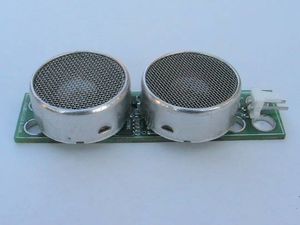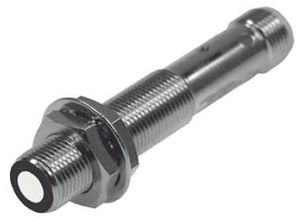Ultrasonic Proximity Sensors
Ultrasonic Proximity Sensor works at a frequency of 40 kHz. It uses two specially made ultrasonic transducers: One transducer emits 40kHz sound, while the other receives 40kHz sound and converts it into electrical variation of the same frequency. Ultrasonic proximity sensors operate by emitting and receiving high-frequency sound waves. The frequency is usually in the order of 200 kHz, which is too high for the human ear to hear.Ultrasonic proximity sensors use reflected or transmitted ultrasonic waves to detect the presence or absence of a target component. The output is Boolean, that is, the sensor merely detects whether the target is or is not within the detection range.
Modes of Operation
There are two basic modes of operation: opposed mode and diffuse (echo) mode. In opposed mode, one sensor emits the sound wave and another, mounted opposite the emitter, receives the sound wave.In diffuse mode, the same sensor emits the sound wave and then listens for the echo that bounces off an object.
Operating Principle
Ultrasonic proximity sensors emit and receive sound waves. The carrier signal is a high frequency, inaudible sound wave. They detect the presence of the target object in one of two configurations.
- Diffuse or Reflective sensors have the transmitter and receiver packaged in the same housing. When a target enters the sensing range of the device, the ultrasonic waves are reflected back to the sensor.
- Opposed or Thru-Beam sensors have the transmitter and receiver packaged separately. The receiver is mounted facing the transmitter and when an object enters the sensing range of an opposed sensor, it blocks the transmitted signal. Rather than activating the trigger when the frequency is received, the trigger is activated when the signal is broken.
Advantages / Disadvantages
Ultrasonic proximity sensors can detect a variety of objects regardless of its material or surface properties. They are useful for object detection over intermediate distances, on the order of several feet. At close proximity they possess a blind spot where objects are not detected. They can also operate in a wide variety of operating conditions.

